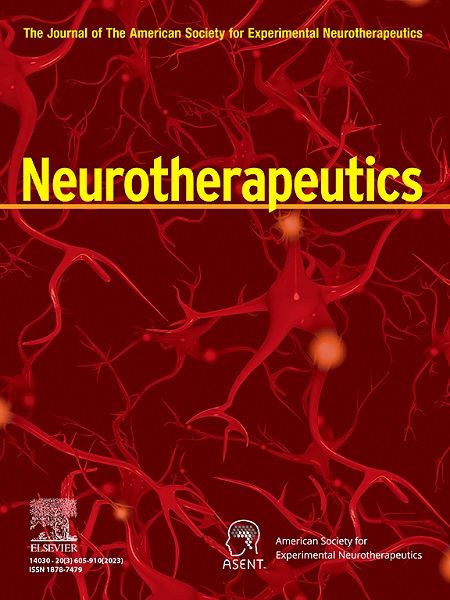微型外源迷走神经刺激器植入的临床体会。
IF 6.9
2区 医学
Q1 CLINICAL NEUROLOGY
引用次数: 0
摘要
迷走神经刺激(VNS)被广泛用于治疗各种神经和精神疾病,包括癫痫和治疗难治性抑郁症,以及增强中风后的运动康复。传统的VNS设备在几十年的使用中已经证明了可靠性,尽管最近的技术进步为进一步增强设备提供了新的机会。许多新出现的适应症只需要间歇性刺激,这使得一种微型外部供电的可植入刺激器(MEPS)的开发成为可能,它比传统设备小约50倍,只需一个切口植入,没有电池或导线,并且可以进行配对刺激。我们从三个MEPS设备的临床试验中收集的观察结果验证了移除植入电池和减小设备尺寸将(1)缩短手术过程和(2)维持或提高安全性结果的假设。数据收集自中风、脊髓损伤或创伤后应激障碍患者。手术时间明显缩短,平均为38±1分钟,而常规VNS为76±3分钟,无明显术中并发症,无翻修手术。MEPS装置在2205小时的治疗期间成功地提供了481,995次刺激。一名参与者在研究外接受了核磁共振成像,表明与标准成像方案兼容。器械相关不良事件发生率低;所有的症状都很轻微,在研究结束前就消退了。总的来说,MEPS装置在特定人群中表现出良好的安全性和性能,某些不良事件的发生率更低,延续了传统VNS系统的强大安全记录。本文章由计算机程序翻译,如有差异,请以英文原文为准。
Clinical experience implanting a miniature externally powered vagus nerve stimulator
Vagus nerve stimulation (VNS) is widely used to treat various neurological and psychiatric conditions, including epilepsy and treatment-resistant depression, as well as to enhance motor rehabilitation following stroke. Conventional VNS devices have demonstrated reliability over decades of use, though recent advancements in technology offer new opportunities to further enhance the device. Many emerging indications require only intermittent stimulation, allowing for the development of a miniature externally powered implantable stimulator (MEPS) that is approximately 50 times smaller than conventional devices, is implanted with a single incision, has no battery or leads, and enables paired stimulation. Our observations compiled from three clinical trials with the MEPS device tested the hypotheses that removing the implanted battery and reducing device size would (1) shorten the surgical procedure and (2) maintain or improve safety outcomes. Data were collected from individuals with stroke, spinal cord injury, or post-traumatic stress disorder. Operative time was significantly reduced, averaging 38 ± 1 min compared to 76 ± 3 min for conventional VNS, with no significant intraoperative complications and no revision surgeries. The MEPS device successfully delivered 481,995 stimulations during 2205 h of therapy. One participant underwent an MRI outside the study, indicating compatibility with standard imaging protocols. Device-related adverse events occurred at a low rate; all were mild and resolved before study end. Overall, the MEPS device demonstrated a favorable safety and performance profile in a select population, with fewer occurrences of certain adverse events, extending the strong safety record of conventional VNS systems.
求助全文
通过发布文献求助,成功后即可免费获取论文全文。
去求助
来源期刊

Neurotherapeutics
医学-神经科学
CiteScore
11.00
自引率
3.50%
发文量
154
审稿时长
6-12 weeks
期刊介绍:
Neurotherapeutics® is the journal of the American Society for Experimental Neurotherapeutics (ASENT). Each issue provides critical reviews of an important topic relating to the treatment of neurological disorders written by international authorities.
The Journal also publishes original research articles in translational neuroscience including descriptions of cutting edge therapies that cross disciplinary lines and represent important contributions to neurotherapeutics for medical practitioners and other researchers in the field.
Neurotherapeutics ® delivers a multidisciplinary perspective on the frontiers of translational neuroscience, provides perspectives on current research and practice, and covers social and ethical as well as scientific issues.
 求助内容:
求助内容: 应助结果提醒方式:
应助结果提醒方式:


